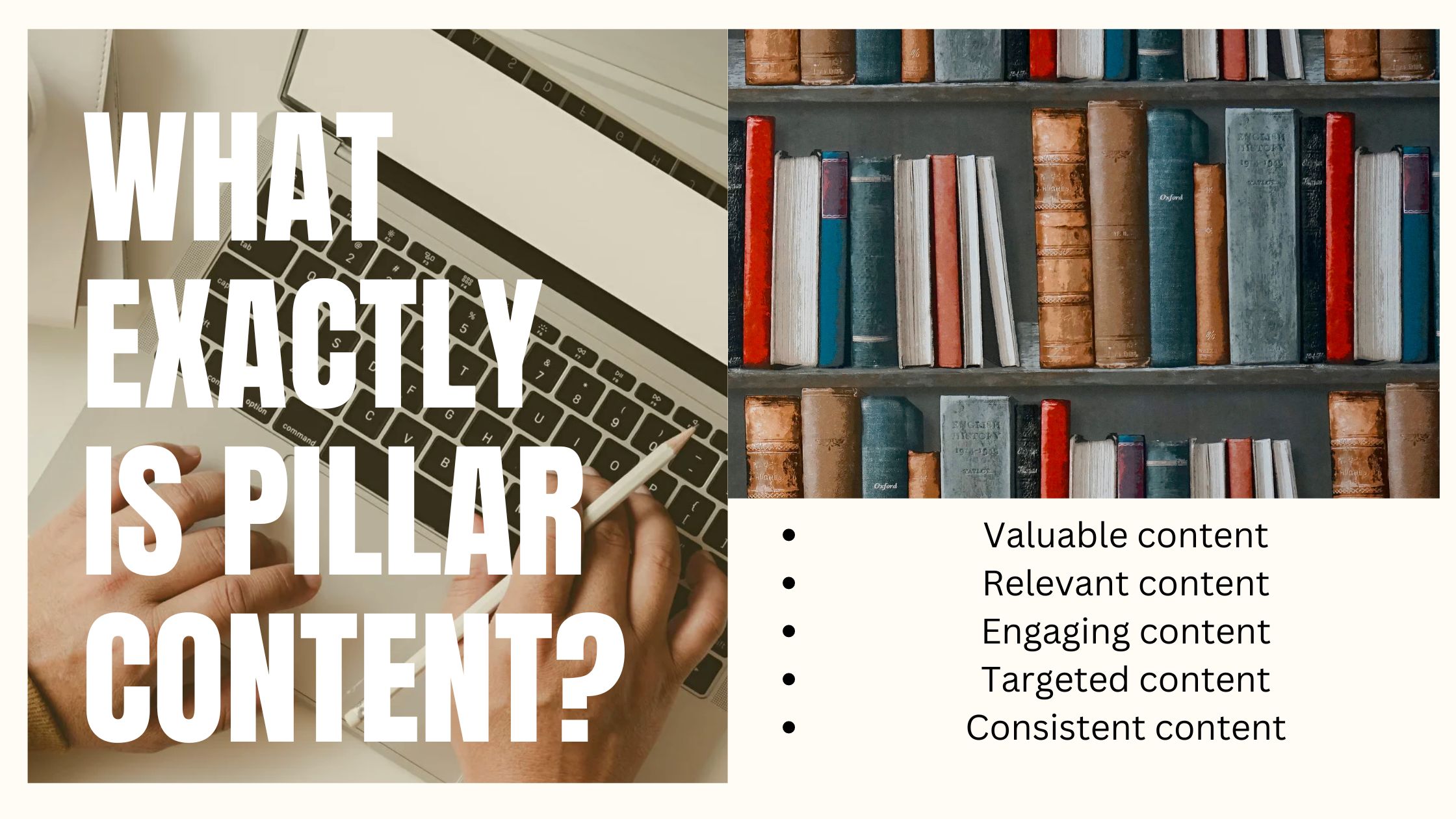More
Exploring the Benefits of a Holistic Approach to Language Learning

Key Takeaways
- Understanding the cognitive, social, and emotional benefits of holistic language learning
- Strategies for incorporating holistic learning into everyday practice
- The intersection of physical wellness and language acquisition
- Predictions for the future of language education
Table of Contents
- Introduction to Holistic Language Learning
- Cognitive Benefits of Language Learning
- Emotional and Social Advantages
- Physical Wellness and Language Practice
- Strategies for Holistic Language Acquisition
- The Role of Cultural Immersion
- Tailoring the Learning Experience
- The Impact of Multilingualism on Global Opportunities
- Challenges and Solutions in Holistic Language Learning
- Future Trends in Holistic Language Learning
Introduction to Holistic Language Learning
Embarking on learning a new language is a holistic endeavor that nurtures the learner’s entire being—intellectually, physically, emotionally, and socially. Unlike traditional methods primarily focusing on grammar and vocabulary, holistic language learning encourages learners to integrate the language into their lives, enabling them to connect with others and gain insights into other cultures. By merging language acquisition with lifestyle, learners can uncover a more profound understanding and mastery of a language. Engaging with holistic language learning further supports this idea, aiding learners in achieving a more balanced and integrated grasp of a new tongue.
Cognitive Benefits of Language Learning
The cognitive perks of learning a new language extend far beyond a mere expansion of one’s lexicon; they involve a transformation in the brain’s functioning that can enhance mental capabilities across the spectrum. Research has revealed that bilingual individuals often outperform their monolingual counterparts in tasks requiring executive control. This suggests that mastering a second language reinforces cognitive systems essential for planning, solving problems, and performing various mentally demanding tasks. Furthermore, as pointed out in an article by Psychology Today, the act of toggling between languages hones one’s attention and can delay the onset of dementia. These cognitive enhancements underscore the undeniable value of multilingualism in mental health and development, reinforcing the argument for a holistic approach in language studies.
Emotional and Social Advantages
Language is an extraordinary tool for fostering empathy and creating connections. By learning a new language, individuals will not only develop communication skills. Still, they will also begin to see the world from different cultural perspectives—fostering a broader understanding and appreciation of the diversity that shapes our global community. This empathy encourages a more considerate approach to cross-cultural relationships and can be a foundation upon which deeper social bonds are built. As language learners navigate through the linguistic landscape of a new tongue, they invariably grow more confident in their abilities to convey their ideas and engage in conversations. Such growth in confidence directly correlates with an individual’s emotional strength and maturity.
Physical Wellness and Language Practice
Holistic language learning must also consider the learner’s physical dimension. It’s becoming increasingly recognized that our bodies and minds are interconnected, and activities that engage both—such as exercise paired with language practice—can help reduce stress and enhance overall well-being. For example, engaging in a new physical activity while using the target language may aid in consolidating language skills through associative learning and embedding the language within a physically engaging context. This can be a particularly effective method for sensory learners who benefit from movement and hands-on activities in their educational pursuits.
Strategies for Holistic Language Acquisition
Effective language acquisition strategies that embody a holistic approach include the integration of language learning with daily activities. For instance, labeling household items in the target language, listening to music, or watching films without subtitles can be entertaining ways to immerse oneself in the language. Moreover, embracing digital language learning techniques, such as apps and online platforms, offers diverse and adaptable options for learners at all levels. These strategies encourage a mindset where language learning is not seen as a chore but rather an exciting part of one’s daily routine.
The Role of Cultural Immersion
The importance of cultural immersion in language learning cannot be overstated. Immersion provides context and relevance to the words and grammatical structures being learned, transforming them from abstract concepts to living communication elements. This is particularly important in grasping the subtleties and nuances that define fluent language use—such as idioms, humor, and cultural references. Moreover, Edutopia highlights how authentic materials, such as news articles and literature from countries where the language is spoken, can offer incredible insights and aid retention, bridging the gap between textbook learning and real-world application. Indeed, embracing cultural immersion can lead to a more enriching and practical language-learning experience.
Tailoring the Learning Experience
Personalization is critical in language learning. Factors such as the learner’s native tongue, age, personal interests, and learning style significantly influence the learning course. Not everyone thrives with the same methods; some may find visual aids invaluable, while others resonate more with auditory input or kinesthetic activities. Catering to these individual preferences enhances the learning process, making it more enjoyable and successful for the learner. Incorporating a variety of teaching methodologies within a holistic framework allows for this customization and ensures that the learner remains engaged and motivated.
The Impact of Multilingualism on Global Opportunities
In our increasingly interconnected world, the value of multilingualism cannot be understated. Knowing multiple languages broadens one’s horizons, creating opportunities for networking, employment, and cultural exchange. Multilingual individuals can often access international markets and engage with a broader spectrum of the global community, furthering their personal and professional development. Such global opportunities afforded by language skills highlight the importance of building language education systems that foster comprehensive linguistic competencies.
Challenges and Solutions in Holistic Language Learning
Though the path to learning a new language is undeniably rewarding, it is also fraught with occasional frustration, motivation dips, and the dreaded plateau effect, where progress seems to stall. Overcoming these obstacles necessitates resilience and resourcefulness. Setting realistic goals, finding a supportive language learning community, or even changing one’s study methods can be important ways to reinvigorate one’s learning journey and surmount these hurdles. Often, the key to pushing past the plateau lies in embracing the journey and acknowledging the sheer joy of connecting with another human in their mother tongue.
Future Trends in Holistic Language Learning
As we look to the future, the face of language education is poised for transformative changes driven by new technologies and pedagogical advances. Virtual reality, artificial intelligence, and adaptive learning platforms have the potential to revolutionize how learners engage with language studies, offering personalized experiences that cater to individual learning styles. While still in their infancy, these innovations promise to make language acquisition more accessible and effective than ever before, ushering in an era of education that is genuinely tailored to the learner’s holistic development.
More
What exactly is Pillar Content?

Pillar content is a simple and efficient method of using your company’s own blog to positively influence the SEO ranking of your own website. This form of content structuring offers a good introduction to the topic of search engine optimization, especially for SEO newbies: Here you can achieve success without having to delve too deeply into the various SEO tools. All you need is your subject matter expertise and some time to plan and write blog posts.
Pillar content is essentially about defining the most important topics (pillar pages) in your own area of expertise in advance. Only below can you find the blog posts relevant to the topic, which are sensibly linked to create a tidy structure.
In this way, you continuously build a clear and thematically sensible blog that users can easily find their way around and that presses exactly the right buttons on Google.
How exactly does that work? We wrote it down here once.
Why do you even need pillar content?
SEO marketing has become a strong profession. Because without visibility online, companies have practically no chance of landing orders or orders. The reason: If you offer your products or services online, there is a lack of walk-in customers. Unlike stationary retail, you don’t just need a great shop window to attract attention on the web: you first have to make it onto the shopping street. Getting hold of a store in a prime location on the Internet’s shopping mile – Google – takes a lot of time and effort. Search engine optimized content can help here and comes in the form of pillar content in a user-friendly version that even lay people can easily implement with a little time.
New user behavior
The use of voice recognition via Siri or Alexa has fundamentally changed search queries. Instead of “dining room lamp”, inquiries are now more like “Which lamp suits my dining table?” This more informative version of the question requires Google to understand semantic links. Pillar content offers the opportunity to respond to the search engine’s algorithms and thus better answer customer questions. And another advantage: By structuring topic clusters and specialized blog posts linked to them, you help your customers to navigate quickly. This makes it easier for them to reach their goal and ultimately spend more time on your website.
Pillar Content: The most important advantages
1. Pillar content as a planning aid
The fixed structure of blog articles makes it much easier to plan and write content. Once the main topics have been defined, you can add contributions to them in turn. This means that topics can be found more quickly and content builds on one another in a meaningful way.
2. Pillar content as a customer persuader
A well-structured blog is not only easier for the website manager to maintain: it also leaves a good impression on customers. Because the cluster structure allows you to find your way around more quickly and save time. After all, users on the web are impatient and want to find the right information with just a few clicks. The constant expansion of a company-relevant topic puts you as an expert in focus – and thus gives you a clear competitive advantage.
3. Pillar Content as a SEO-Strategies
The search algorithms that Google works with also affect the way companies have to respond. At the beginning of the SEO era, the focus was on individual keywords. So a lamp retailer just had to drop the main keyword “lamp” and secondary keywords like “floor lamp,” “table lamp,” etc. enough times to rank at the top. The result was completely illegible texts that users completely neglected. Today it’s different: Put simply, Google recognizes connections and sees when a topic is being discussed in depth. This means the search engine classifies you as an expert and puts you at the top of the results. For blog writers this means: keywords, yes – but always write for the readers, not directly for Google.
Pillar Content: Create the perfect topic cluster in 3 steps
Step 1: Define your main topics (pillar pages)
At the beginning, identify the topics that you consider to be absolutely relevant. Don’t worry: the topics don’t have to be filled with content directly, but this will give you a good overview. Unfilled topics simply remain invisible until you have finished texts for them. That’s preferable to simply displaying a “content coming soon” placeholder. The structure can be constantly expanded. In the example of the lamp dealer, the following topics could be at the top:
- Latest Lamp Designs
- Top Lamp Brands and Makers
- Installation Advice
- Company news
Introductory texts are now written for each pillar page. Explain to users in understandable terms what to expect in this category.
Step 2: Populate the pillar pages with blog posts
Now you can go into more depth: blog posts are gradually being written for each topic. Maybe you already have one or two relevant blog posts in your archive. Answerthepublic.com is a helpful tool for finding blog topics : the questions that match the search term are displayed here. The lamp retailer from the example above only needs to enter “lamp” here and can draw from a large pool of topic inspiration. In addition, you should always keep the customers in mind and brainstorm using your own experience. Finally, carry out classic keyword research and define the most important search terms for the blog post you will write next.
Step 3: Write and start blog posts!
You have defined the main topics, i.e. pillar pages, and carried out keyword research. Now it’s time to gradually feed the topics with blog posts. Each blog post is assigned to a main topic and is linked to its page. Within the blog post, backlinks and internal links to other articles from the same pillar help to guide users further.
Effective Tips for writing blog posts:
Here are some simple tips for writing blog posts:
- Write content that supports your expertise
- Write in a structured manner and use subheadings marked with h2, h3, etc
- For longer blog posts, use lists to break up the structure
- Don’t write just for the sake of writing something. Instead, every article should provide added value to readers
- Don’t focus on a focus topic just because your SEO research spit out the corresponding keyword, but always focus on the users
- Don’t start writing wildly, but create a structure or an editorial plan in advance. It happens faster than you think.
Does it all sound a bit much now? Don’t worry, that’s not it. Organizing your company blog is always beneficial. This makes your work easier and makes it easier for readers to navigate the site. Once the structure has been defined, the rest happens automatically. Maybe you have already written old blog posts that you just need to assign to the new pillar page. Whether from an SEO or user perspective: tidy pillar content gives your blog new impact.
FAQs
What are content pillars?
The content pillars are all the themes/major categories of topics that you are going to cover on your Instagram account . In particular, they allow you to store all your ideas in boxes. This makes it much easier for you to anticipate your next posts and generate interesting ideas!
How to find your content pillars?
Know what interests her, motivates her, provokes emotions in her, amuses her, scares her, questions her, etc. You will need to refer to your personas – your target customers – and define your content accordingly.
What are the 5 content pillars?
The 5 content pillars are:
- Valuable content
- Relevant content
- g
- Targeted content
- Consistent content
What are the 4 effective content pillars?
Content is key when it comes to achieving results with your CRM strategy. Here are the four pillars of effective content that can help you develop a successful CRM strategy:
- Relevant: Your content must be relevant to your target audience. You should address their needs and problems.
- Captivating: Your content must be captivating. It should be interesting and useful enough to make people stay.
- Call to action: Your content must contain a call to action. He should tell people what to do next and make it easy for them to do it.
- Consistent: Your content must be consistent. It should be published regularly and updated as necessary.
Read Also:
More
Understanding the Importance of Regular Electrical Maintenance for Commercial Properties

Key Takeaways
- Engaging a skilled commercial electrician is essential for ensuring the smooth operation of business facilities.
- Regular electrical maintenance is not just a cost; it’s a business strategy for prevention, savings, and compliance.
- Maintaining the latest technological trends and safety regulations is part of effective electrical management.
The Role of Commercial Electricians in Preventing Downtime
When business continuity is at stake, a trusted commercial electrician becomes indispensable to the health of the enterprise. Their role extends far beyond fixing immediate issues; it encompasses a proactive engagement to maintain and improve electrical systems that are the lifeblood of commercial operations. Mitigating the risk of electrical failures involves routine inspections, timely interventions, and skillful repairs, aiming to minimize any impact on business activities.
An experienced electrician’s toolbox is filled with strategies that preserve the integrity of complex electrical networks, from load balancing to thermal imaging analysis. They are the unsung guardians of data centers, retail stores, and office complexes alike, whose vigilant service keeps the lights on and machines humming. By collaborating with knowledgeable commercial electricians, businesses can significantly lower the risk of productivity-killing power outages and equipment damage.
Why Electrical Maintenance Should Be Part of Your Business Strategy
A strategic approach to business operations considers all potential risks and devises measures to mitigate them. Electrical maintenance is one such measure that is essential for a company’s ongoing health and profitability. When business leaders decide to schedule regular electrical maintenance, they are not simply electing to fix potential issues; they are choosing to avert crises that could lead to operations grinding to a halt, damaging their revenue and reputation. Incorporating commercial lighting into this maintenance plan ensures that workspaces remain well-lit, promoting employee productivity and safety while enhancing the overall ambiance for clients or customers.
Cost figures surrounding electrical maintenance are telling; it’s estimated that the return on investment for preventive maintenance can be significant when measured against the cost of downtime and emergency repairs. The numbers are even more persuasive when considering the long-term effects of system efficiency and energy savings. This places regular electrical maintenance on the balance sheet as a strategic investment with immediate and future benefits.
Energy Management and Cost Savings Through Electrical Maintenance
Waste not, want not—an age-old adage that resonates loudly in the context of electrical energy management. It’s widely accepted that effective energy management is not solely a technical challenge but a fiscal prerogative. Maintenance conducted regularly under the watchful eye of expert electricians can pinpoint inefficiencies, whether in outdated lighting systems, ill-sized motors, or HVAC systems operating under stress.
Cutting these inefficiencies significantly reduces energy costs, contributing directly to the bottom line. It further aligns with broader energy conservation and environmental stewardship objectives, aligning business practices with the principles detailed in the Energy Saver initiative. This holistic approach to electrical maintenance thus serves economic and ecological purposes, positioning businesses well within the paradigm of modern, responsible operations.
Preventive vs. Reactive Maintenance: A Strategic Approach
The comparison between a preventive and reactive approach to maintenance is akin to the difference between strategic foresight and hasty firefighting. A preventive maintenance regime that includes regularly scheduled inspections and servicing can forestall significant equipment failures. At the same time, a reactive approach often leads to a cycle of urgent repairs and potential safety hazards.
Adopting a preventive strategy may initially seem like a more significant investment of time and resources, but its benefits are clear and extend beyond cost savings. It contributes to a safer working environment, increases equipment lifespan, and ensures operations can continue without costly disruptions. By partnering with professionals for a preventive plan, businesses move from playing catch-up with their electrical systems to leading the pack in operational continuity and care.
More
Mandevilla Care: Essential Tips and Advice

Unlock the secrets of Mandevilla care with our expert tips and advice. Learn how to nurture these beautiful vines for vibrant blooms and lush foliage all season long.
How is the Mandevilla planted correctly?
Unpack the plant from the shipping container and water the plant if necessary (if the soil appears dry). The black plastic pot must be removed before planting.
Plant them in a container. A bucket should be approx. 40-50 cm wide at the edge of the pot. The plant needs a sufficient volume of soil to avoid drought in summer.
Important: Fill the bucket with fresh, loose, quality potting soil. This is the basis for healthy growth! If the garden soil is heavy, it is best to add some gravel or sand to make the soil more permeable overall. This allows the plants to quickly form roots and grow, and you also avoid waterlogging. Water thoroughly after planting. Before each new watering, let the plant dry out properly. This prevents root rot.
Adjusting the watering amounts to the growth of the Mandevilla and the weather. The plant usually needs little water in March/April, and more from May onwards when it gets warm.
How is Mandevilla properly cared for?
The potted plants thrive best in a sunny location. Give some long-term fertilizer in April/May and you’ll get a lush, large plant with lots of flowers in the summer. Fertilize again every now and then in summer. When watering, keep the soil moist but avoid waterlogging. Yellow leaves can be a sign of waterlogging. The plant has a low water requirement and can survive without water for a few days. If it is overwatered, it will produce many shoots but few flowers.
With the Mandevilla there is no need to clean up the dead flowers because old flowers simply fall off and new ones are formed.
From mid-October at the latest, the plant should be brought into the house and protected from frost. To overwinter, you can place the Mandevilla in a cool room (approx. 5-12° C) or in the winter garden or living room (approx. 20° C). When overwintering in a cool room, it needs little water and can occasionally be completely dry. The best time to cut back the Mandevilla is in February/March.
What use does the Mandevilla have?
As potted plants, Mandevilla are guaranteed to bring a southern flair to the balcony and terrace or to the garden and winter garden! The lavish abundance of funnel-shaped flowers makes the easy-care climbing plant a much-admired star.
The plant now mostly called Mandeville (named after Henry John Mandeville) is often also known under the botanical name Dipladenia. The undemanding perennial bloomer is in full bloom from May and continues to bloom until the first frost. The leaves are shiny and evergreen. The shoots of the climbing plants wind around a climbing aid to a height of approx. 2 meters.
Which soil for Mandevilla?
High-quality potting soil: For its record-breaking flower production, a Mandevilla always needs sufficient water and nutrients over the summer months. Mandevilla therefore has the best start to potted plant life in pre-fertilized potting soil with high water storage capacity.
Is Mandevilla perennial?
The Mandevilla is very sensitive to frost and is therefore not hardy. However, it is perennial , so it would be a shame to let the beautiful plant die in the winter. Therefore, you should offer it a good winter quarters that should meet the following requirements: Bright, but without direct sun.
Which fertilizer for Mandevilla?
You can also use compost or cow dung grains for your Mandevilla, both of which serve as base fertilizer. This means, for example: adding a little basic fertilizer to the pot once every 6 weeks. We recommend combining this with inorganic fertilizer.
How fast does Mandevilla grow?
Mandevilla grows quickly and therefore quickly gets out of shape. If the plant becomes too large for your balcony, terrace or winter garden, you should cut it back with secateurs in late winter, i.e. at the beginning of March at the latest. As a vigorous plant, you can even cut it back to the ground.
Read Also:
-

 Top1 year ago
Top1 year ago2022 US House committee releases Trump’s tax returns, capping a years-long battle
-

 Top1 year ago
Top1 year agoInterview With Niantic CEO John Niantsullivan
-

 News12 months ago
News12 months agoUSPS EMPLOYEE ASSISTANCE PROGRAM SERVICES AND BENEFITS
-

 Top11 months ago
Top11 months agoUnderstanding the Healing Process of Nose Piercings – A Comprehensive Guide
-

 Tech12 months ago
Tech12 months agoUSPS LiteBlue ePayroll: A Comprehensive Guide
-

 More11 months ago
More11 months agoList Of Unblocked Game Sites 2023
-

 Cryptocurrency10 months ago
Cryptocurrency10 months agoBridging the Gap: Binbex Futures
-

 Business9 months ago
Business9 months agoDoes 7-Eleven Take Apple Pay
